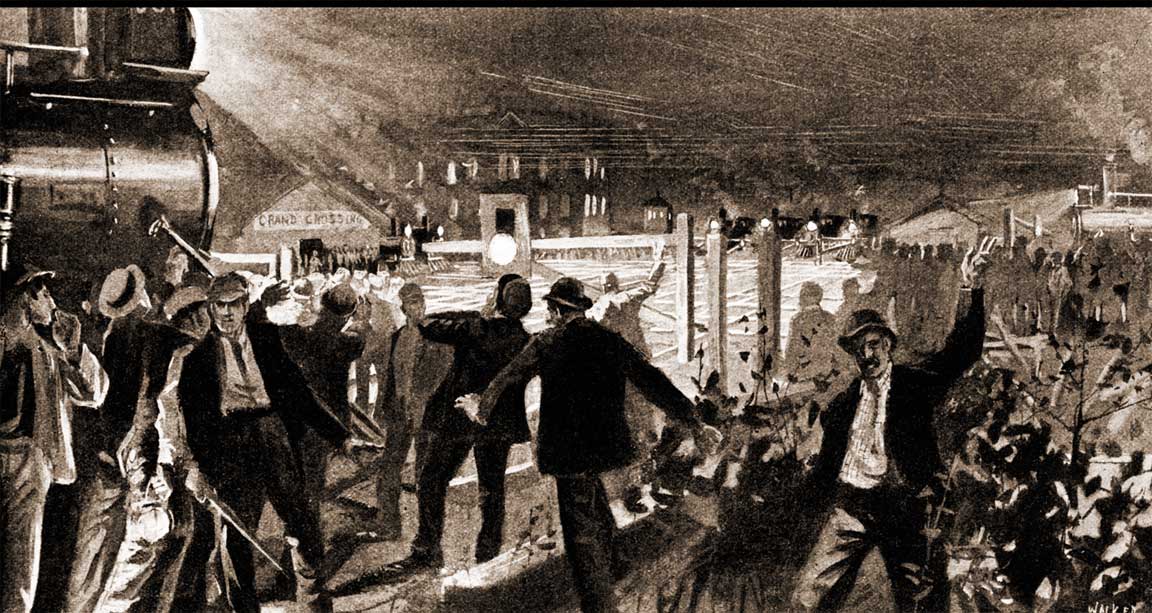Pullman Rail Strike
 Punch cartoon
Punch cartoon
The first national rail strike began with a strike at the Pullman Company located in Chicago. The strike began on May 11, 1894 and was a direct result of the company's decision to lower wages. Pullman lowered the wages while keeping rents in its company town high. The strike brought American railroads to a halt. The strike spread nationwide and was ended after the federal government sent troops to break the strike. A total of 30 strikers were killed and 57 wounded.
The Pullman Palace Car Company was the manufacturer of many of the railroad cars of the period. Most of its workers lived in a company town built by the company. The company lowered the wages of its workers, but did not lower the rent paid by workers. The workers called a strike. Other railroad workers agreed not to service any trains carrying pullman cars. Leading the workers was Eugene Debs. The strike effectively stopped all rail service west of Detroit. The companies fought back and tried to bring in strikebreakers. When that did not work they turned to the Federal government under President Cleveland. The government demanded that the workers stop interfering with the trains that were carrying US mail. When they refused the US army was called in to defend the trains and remove the strikers. The troops broke the strike. During the strike a total of 30 strikers were killed and 57 were wounded.
The repeal of the Silver Act failed to stem the drain on American gold reserves. At this point, President Cleveland agreed to sell gold bonds at a discount to Wall Street bankers like J.P. Morgan, in return for their cooperation in stemming the withdrawal of gold from the Treasury.
 >
>